Predictions & Data for this entry
| Model: abj | climate: MB, MC | migrate: Mo | phylum: |
| COMPLETE = 2.5 | ecozone: MAE | food: biPz | class: |
| MRE = 0.065 | habitat: 0iMpe | gender: D | order: |
| SMSE = 0.012 | embryo: Mpe | reprod: O | family: |
Zero-variate data
| Data | Observed | Predicted | (RE) | Unit | Description | Reference |
|---|---|---|---|---|---|---|
| ab | 8 | 8.127 | (0.01584) | d | age at birth | ReMene2008 |
| ap | 365 | 206.5 | (0.4343) | d | age at puberty | SilvSant2006 |
| ap2 | 234 | 218.8 | (0.06501) | d | age at puberty | Dess2015 |
| am | 2920 | 2688 | (0.07952) | d | life span | SilvCarr2008 |
| Lb | 0.5 | 0.317 | (0.366) | cm | total length at birth | ReMene2008 |
| Lp | 13 | 12.59 | (0.03184) | cm | total length at puberty | SilvSant2006 |
| Lp2 | 12 | 12.59 | (0.04884) | cm | total length at puberty | Dess2015 |
| Li | 23.8 | 23.94 | (0.005854) | cm | ultimate total length | SilvCarr2008 |
| Wwb | 0.00025 | 0.0002579 | (0.03173) | g | wet weight at birth | ReMene2008 |
| Wwp | 20 | 16.14 | (0.193) | g | wet weight at puberty | ReMene2008 |
| Wwp2 | 16.1 | 16.14 | (0.002525) | g | wet weight at puberty | Dess2015 |
| Wwi | 112 | 111.1 | (0.008322) | g | ultimate wet weight | ReMene2008 |
| Ri | 1233 | 1196 | (0.02992) | #/d | maximum reprod rate | NuneSilv2011, ICES2012 |
Uni- and bivariate data
| Data | Figure | Independent variable | Dependent variable | (RE) | Reference |
|---|---|---|---|---|---|
| LW_p1 | 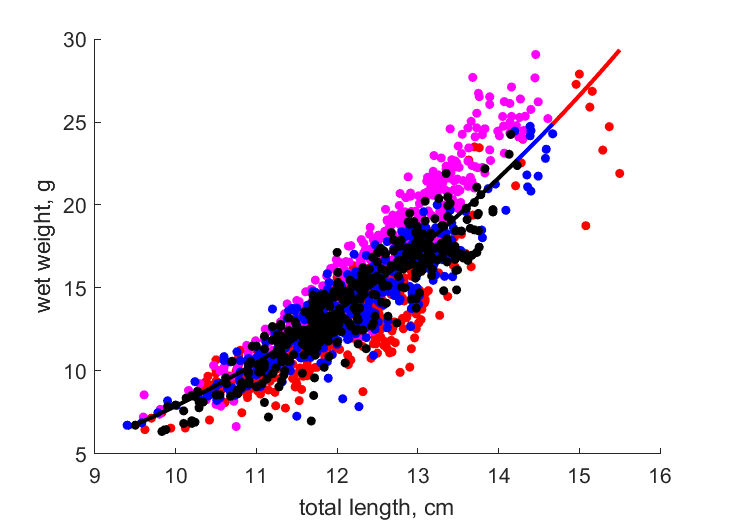 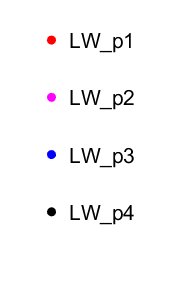 | total length | wet weight | (0.1173) | Quei2017 |
| LW_p2 |   | total length | wet weight | (0.1073) | Quei2017 |
| LW_p3 |   | total length | wet weight | (0.07662) | Quei2017 |
| LW_p4 |   | total length | wet weight | (0.07736) | Quei2017 |
| tGSI |  | Age | Gonado somatic index | (2.032) | Dess2015 |
| tL | 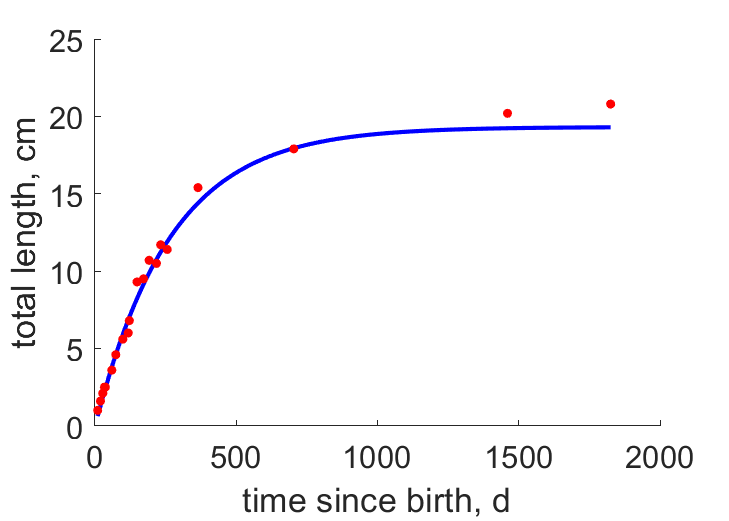 | time since birth | total length | (0.1159) | SilvCarr2008 |
| tL2 | 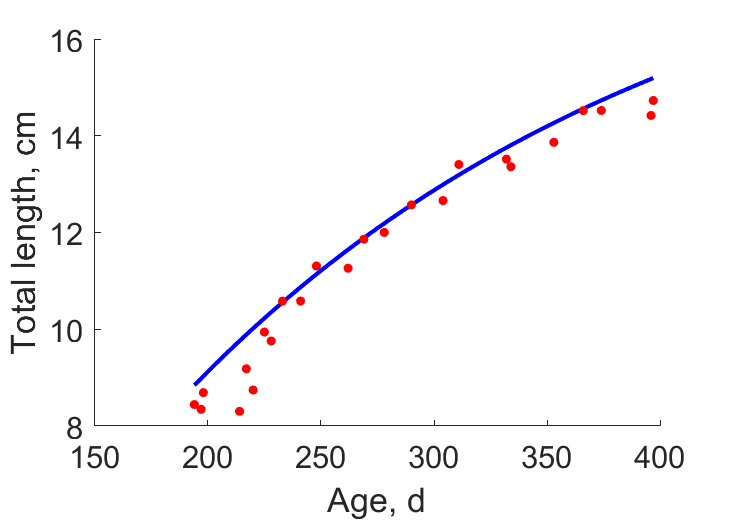 | Age | Total length | (0.06742) | Dess2015 |
| tW | 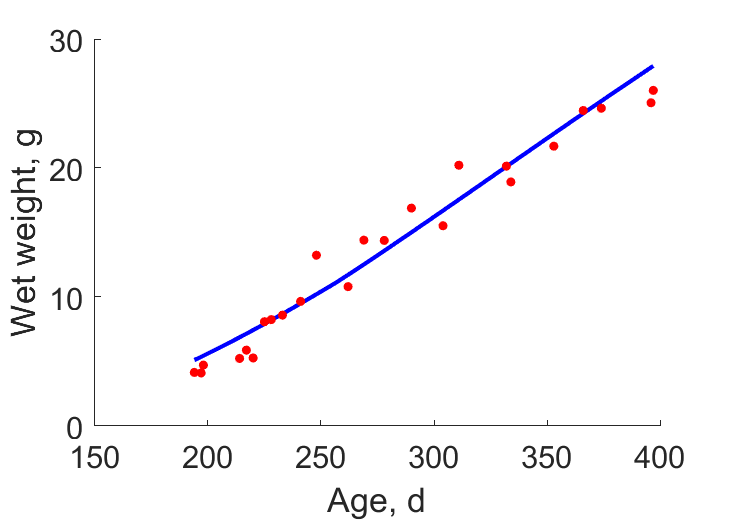 | Age | Wet weight | (0.09812) | Dess2015 |
Pseudo-data at Tref = 20°C
| Data | Generalised animal | Sardina pilchardus | Unit | Description |
|---|---|---|---|---|
| v | 0.02 | 0.01283 | cm/d | energy conductance |
| p_M | 18 | 1704 | J/d.cm^3 | vol-spec som maint |
| k_J | 0.002 | 0.002 | 1/d | maturity maint rate coefficient |
| k | 0.3 | 0.006161 | - | maintenance ratio |
| kap | 0.8 | 0.7337 | - | allocation fraction to soma |
| kap_G | 0.8 | 0.7973 | - | growth efficiency |
| kap_R | 0.95 | 0.95 | - | reproduction efficiency |
Discussion
- Scaled functional responses in the 4 ponds exceed 1; this is possible if supplied food is more nutritious than average in the field
- New in version 2019/09/16 (difference to version 2017/07/06): integration of data and new parameter estimates to include the data.Zero variate data on puberty (ap2, Lp2, Wwp2) and three univariate data sets were introduced from a control experiment that lasted6 months in which age, weight, and maturation of 250 individuals (at start of experiment) were monitored accurately, with some individuals attaining puberty[a thesis work, Dessier 2015]. Age at the beginning of the experiment was determined via otoliths and the ontogeny before the experiment was reconstructedusing temperature data in Gatti et all 2017 [Ref: GattPeti2017]. Other data has been kept identical from the last entry.
- Data for age - GSI: The last data point was given weight zero in parameter estimation. The fish may have released some reproductive material but it is not certain.
- mod_5: assume 10 spawnings per season, which also affects tGSI predictions
Bibliography